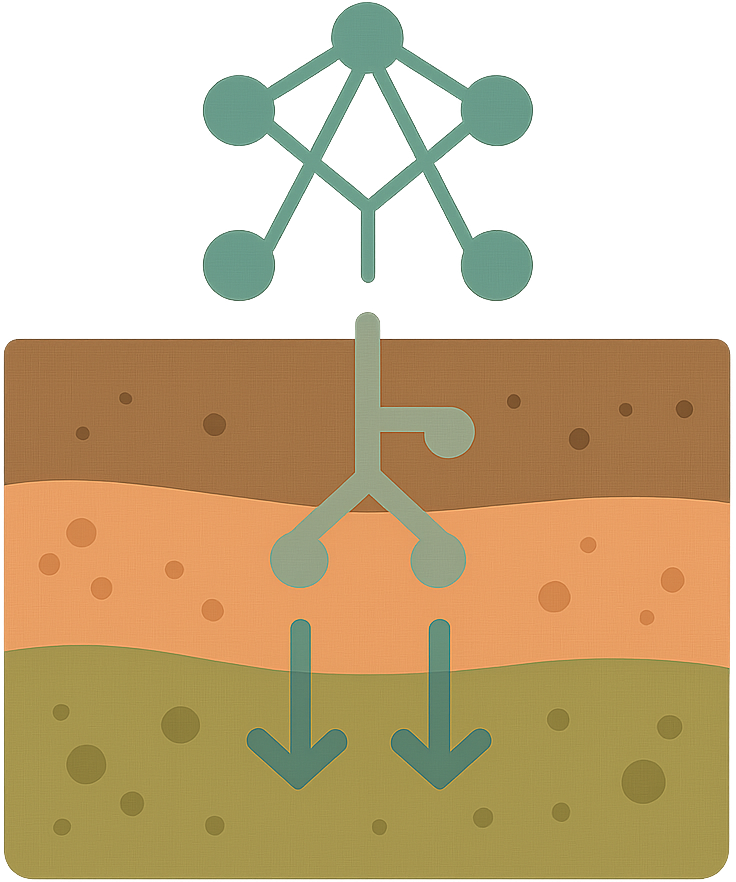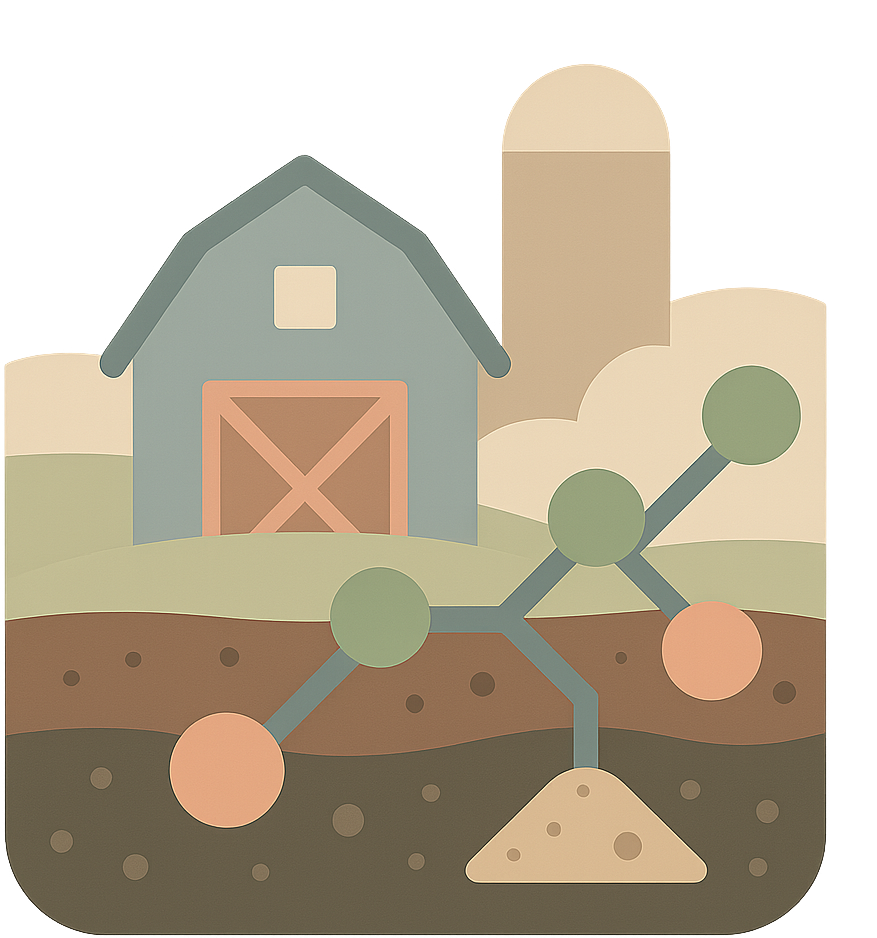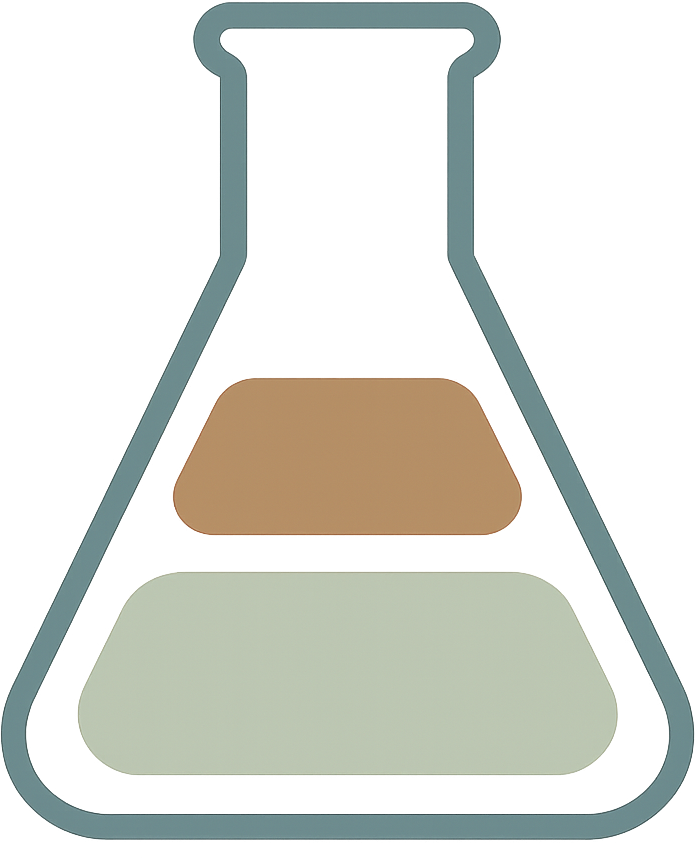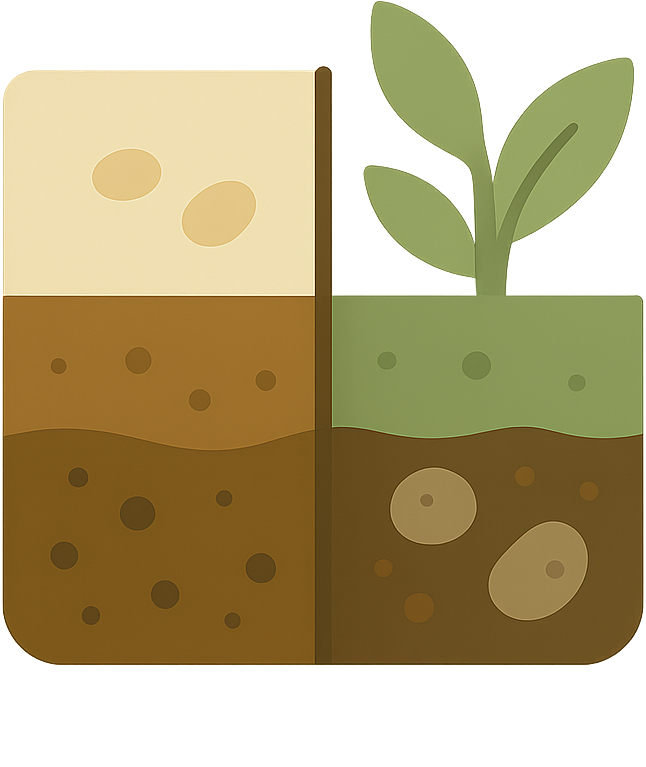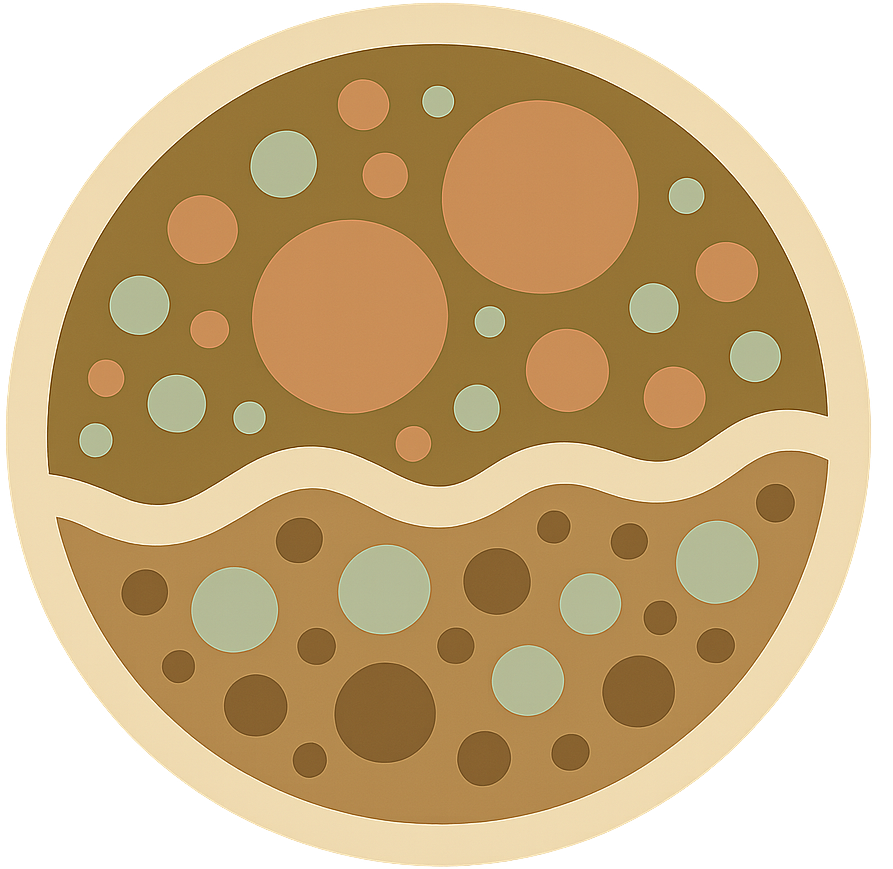Dr. Sam Leuthold
Soil Biogeochemist at Colorado State University
I study how soil organic carbon and nitrogen cycle through agricultural systems, using spectroscopy, biogeochemistry, and modeling to understand how these processes drive productivity, resilience, and long-term sustainability.
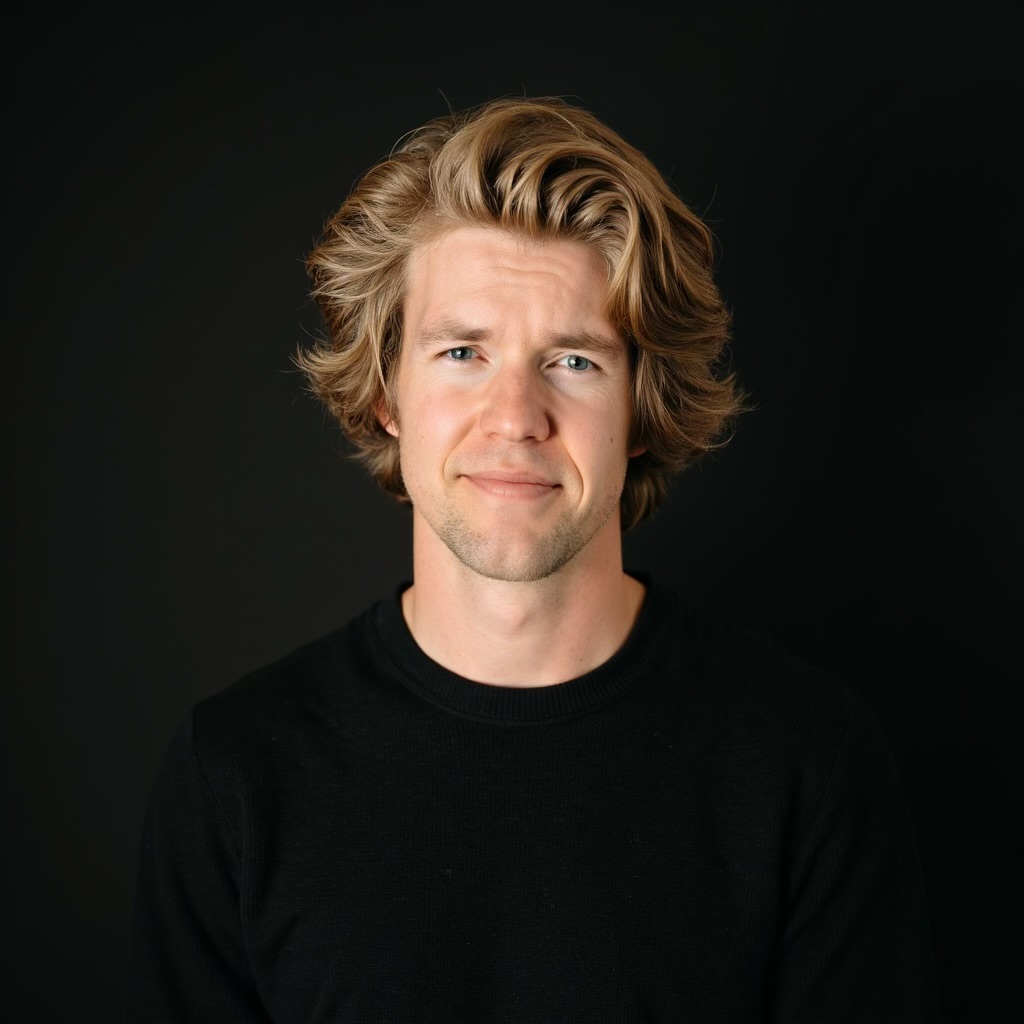
About
Hi there — I’m Sam, a soil biogeochemist. My work aims to connect patterns and concepts across scales, from interactions at the mineral surface up to landscape-level processes, to better understand how complex soil systems function.
- How do soil organic matter fractions form and persist across scales — and what do they tell us about the function of agroecosystems?
- Can a more mechanistic understanding of soil organic matter dynamics help us design agroecosystems that are both productive and resilient?
- How do we build soil understanding into the design of agricultural systems, management strategies, and policies that can withstand a changing climate?
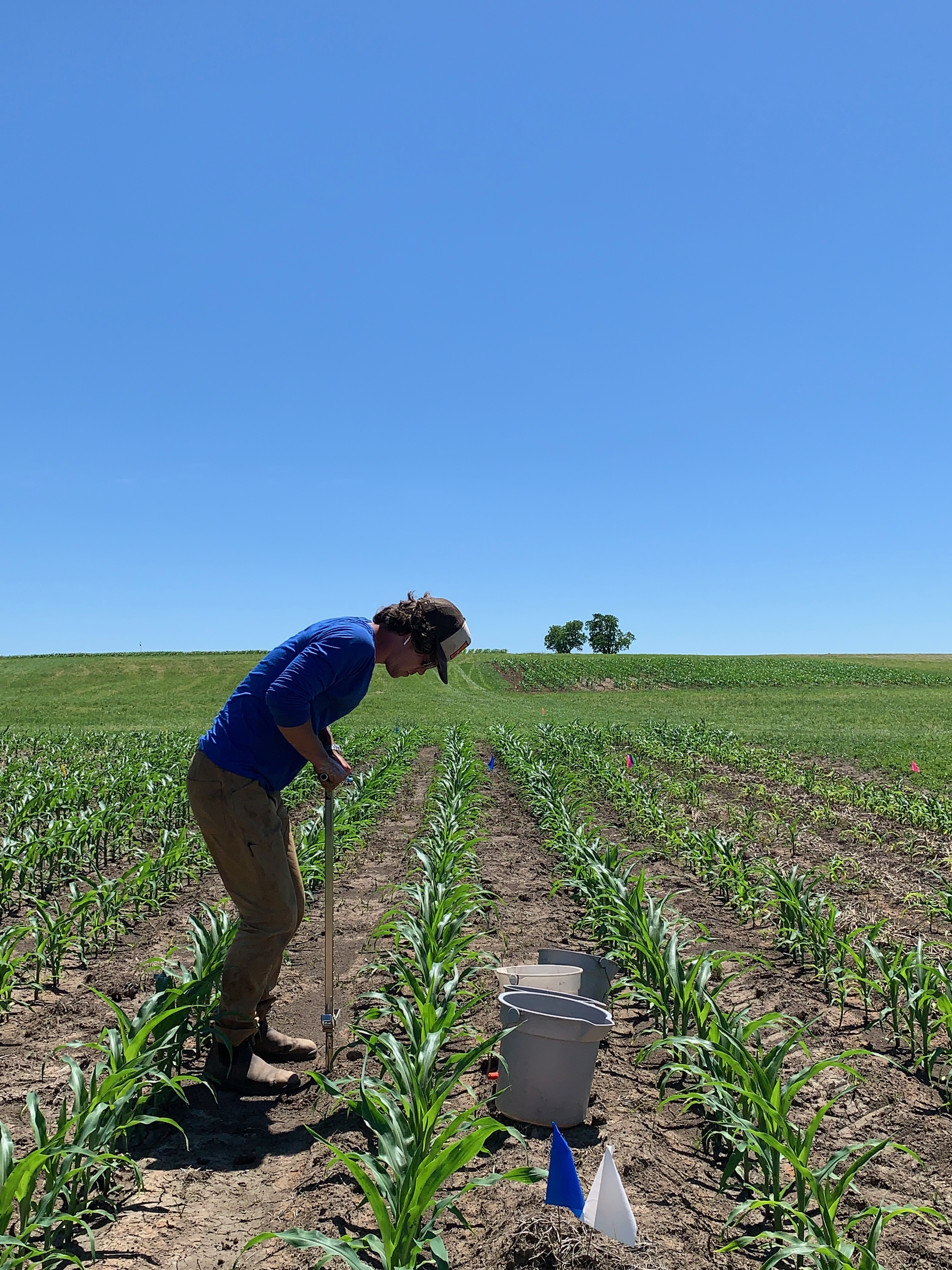
These questions have taken me across a range of systems — from streamflow biogeochemistry in mountain watersheds to nitrogen cycling in corn and soybean fields. Over time, my work has become increasingly focused on the formation and function of soil organic matter, and how its component fractions reflect ecosystem and agronomic processes across scales. I’m especially interested in how particulate and mineral-associated organic matter dynamics relate to productivity, yield stability, and long-term soil function in managed systems.
I’m currently a Postdoctoral Fellow in the Cotrufo Soil Innovation Lab at Colorado State University, where I lead work across several projects focused on soil carbon, land management, and agroecosystem resilience. I use mid-infrared spectroscopy, machine learning, and fractionation approaches to model carbon dynamics and predict agronomic and ecosystem outcomes. My work spans efforts to evaluate carbon market potential, improve soil monitoring strategies, and connect management decisions to long-term sustainability.
Education
2021 – 2024
PhD in Ecology
Colorado State University
Dissertation: Isolation, interpretation, and implications of physical soil organic matter fractions in agroecosystems
Advisors: Dr. Francesca Cotrufo & Dr. Jocelyn Lavallee
Focus: Soil organic matter, spectroscopy, agroecosystem carbon dynamics
2019 – 2021
MS in Plant and Soil Sciences
University of Kentucky
Thesis: Interactive effects of landscape topography and cover crops in Southeastern agroecosystems
Advisor: Dr. Hanna Poffenbarger
Focus: Cover crops, landscape heterogeneity, carbon and nitrogen cycling
2014 – 2017
BS in Soil and Water Sciences
Montana State University
Minor: Geographic Information Systems (GIS)
Focus: Hydrology, soil carbon, agroecology
Publications
Total Citations: 143
h-index: 9
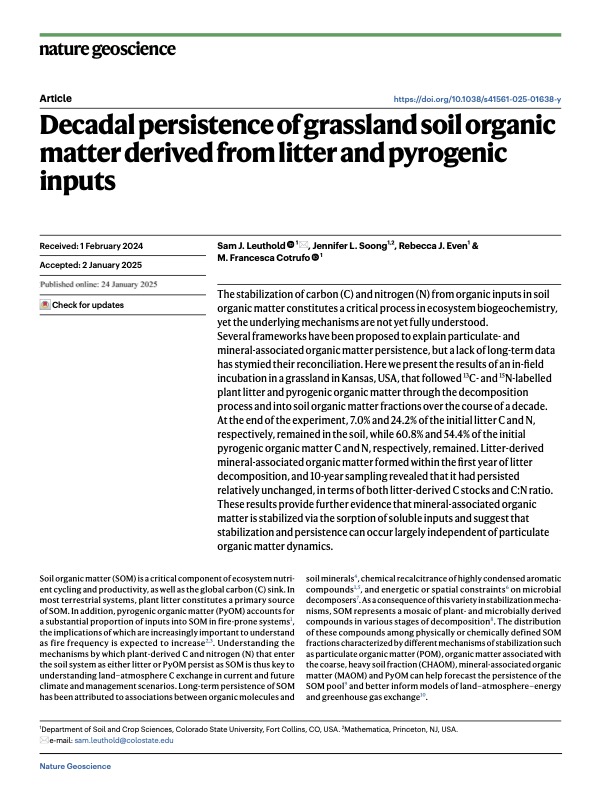
Mechanistic evidence for different decadal SOM persistence pathways
Cited 0 times
Nature Geoscience, 2025
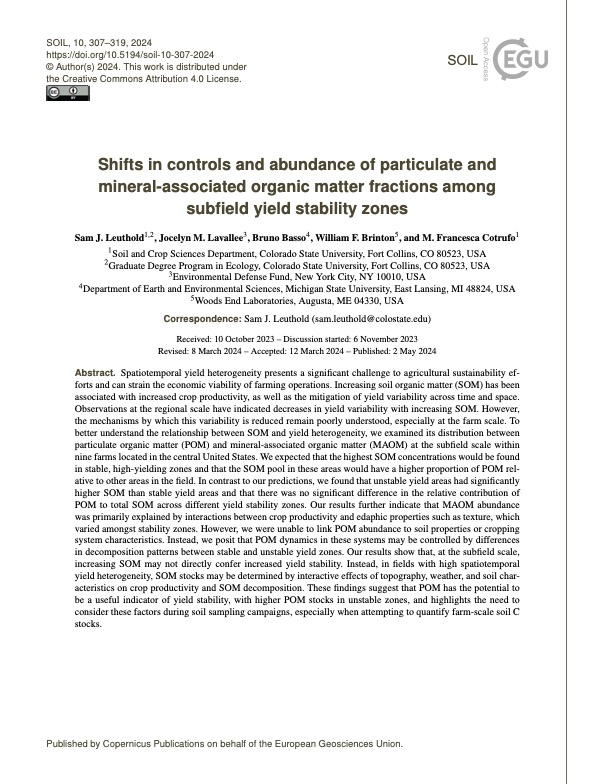
Heterogenous SOM fraction dynamics across yield stability zones
Cited 0 times
SOIL, 2024
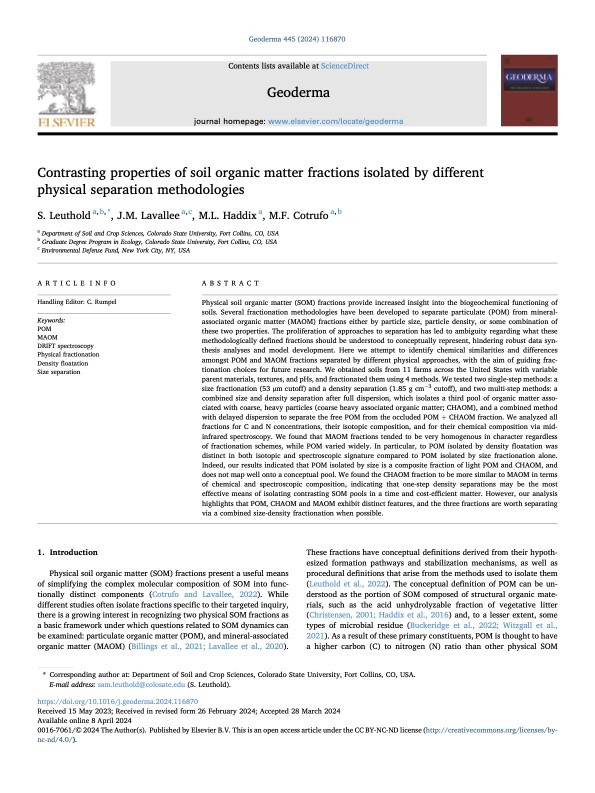
Methodolgical divergence in characteristics of isolated SOM fractions
Cited 19 times
Geoderma, 2024
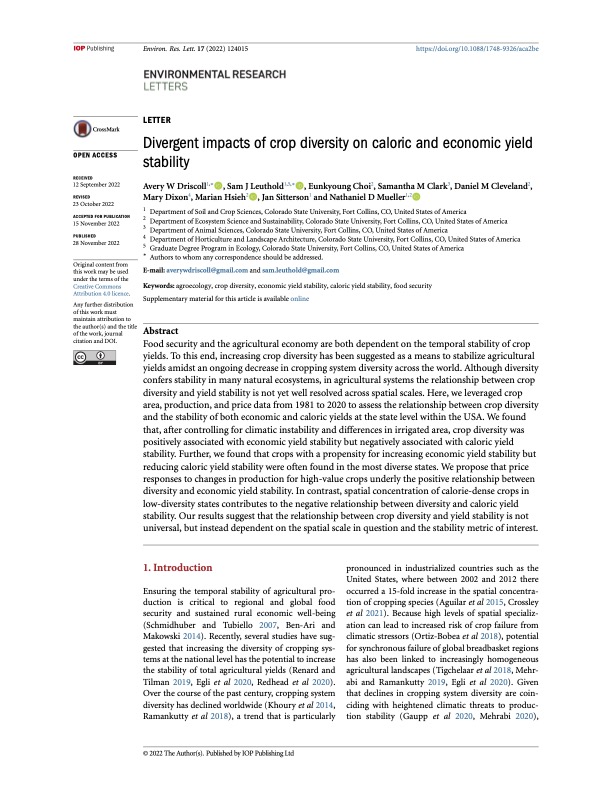
Crop diversity impacts on economic and caloric yield stability
Cited 10 times
Environmental Research Letters, 2022
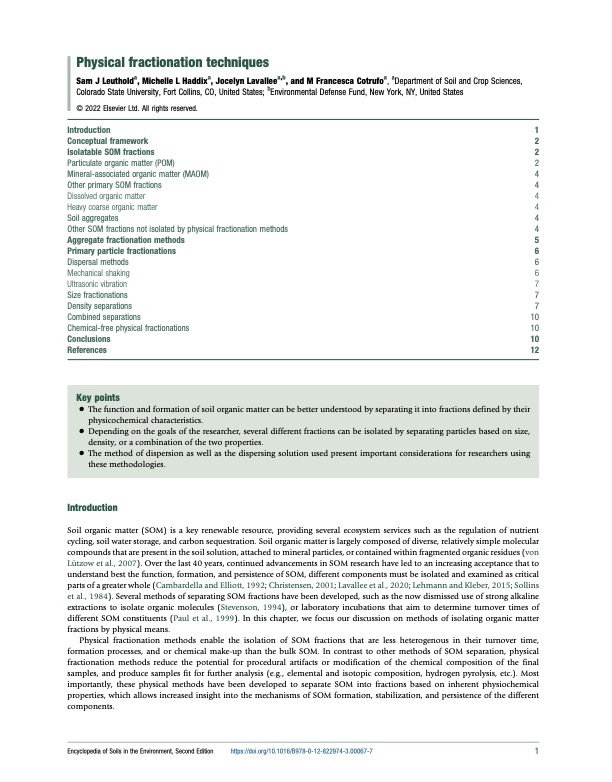
SOM fractionation techniques: A review
Cited 38 times
Encyclopedia of Soils in the Environment, 2022
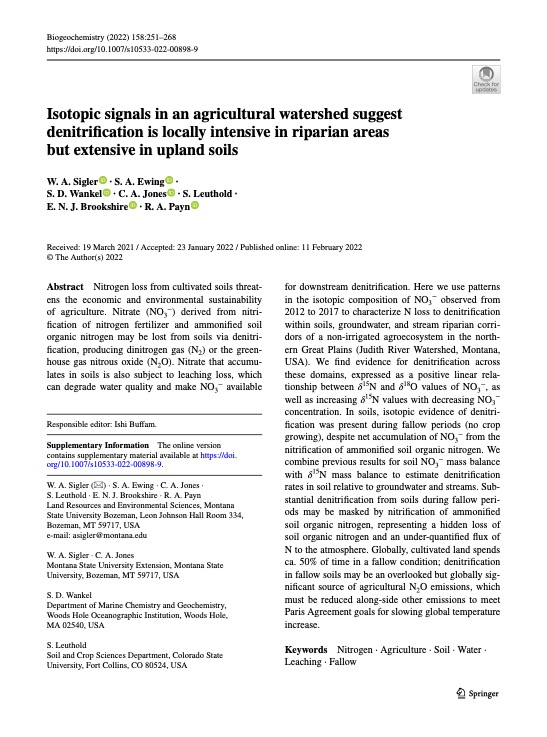
Isotopic evidence for spatially distributed denitrification
Cited 12 times
Biogeochemistry, 2022
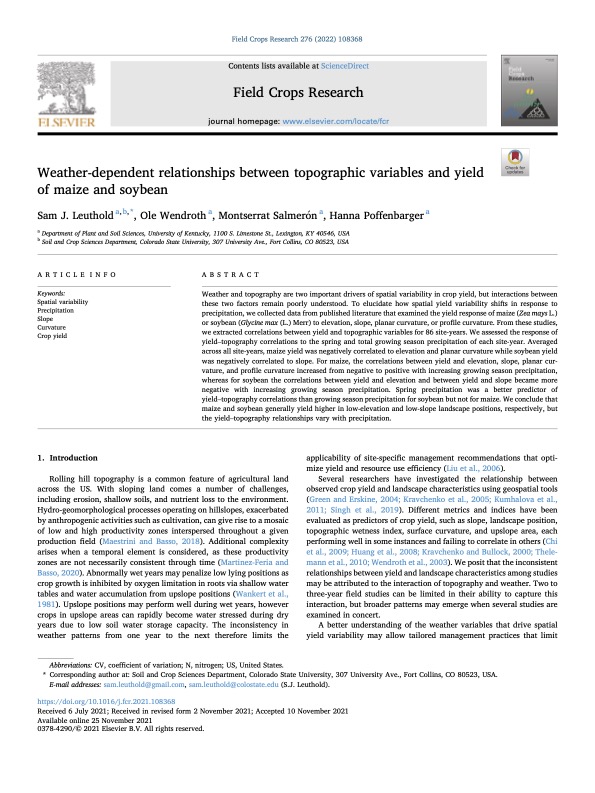
Topographic controls on yield response to climate forcers
Cited 14 times
Field Crops Research, 2022
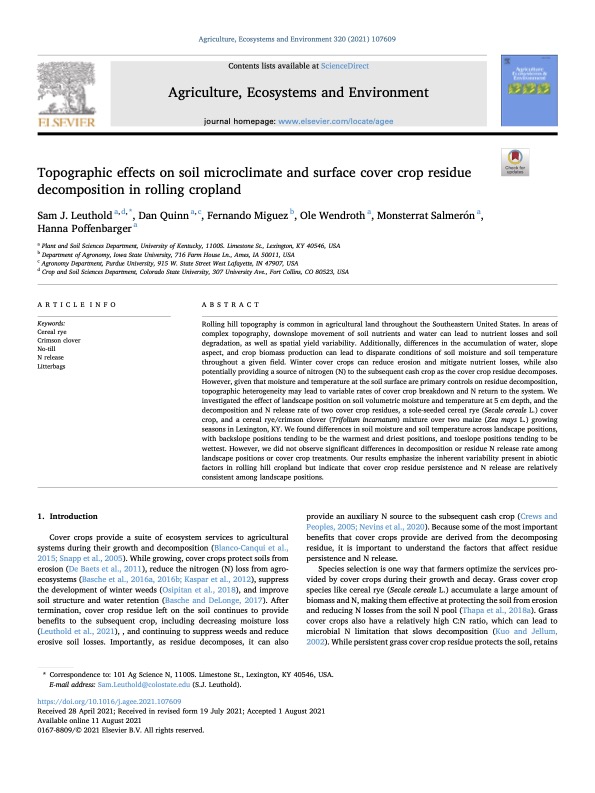
Topographic shifts in microclimate and cover crop decomposition
Cited 13 times
Agriculture, Ecosystems, and Environment, 2021
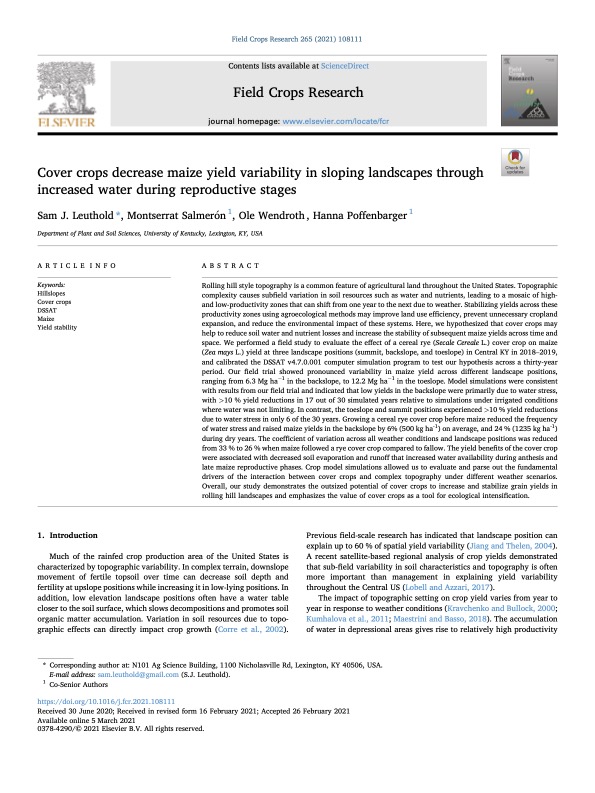
Cover crops buffer yield variability via increased soil water
Cited 17 times
Field Crops Research, 2021
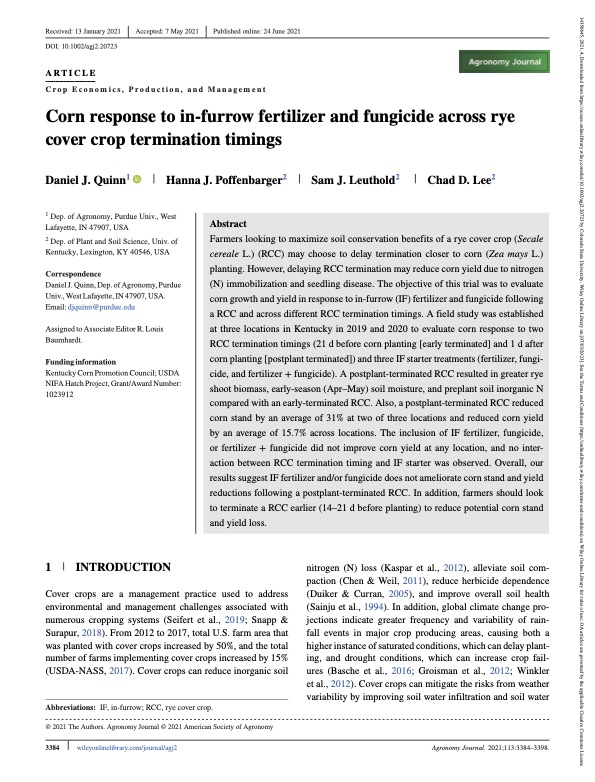
In-furrow input interactations with cover crop termination timing
Cited 11 times
Agronomy Journal, 2021
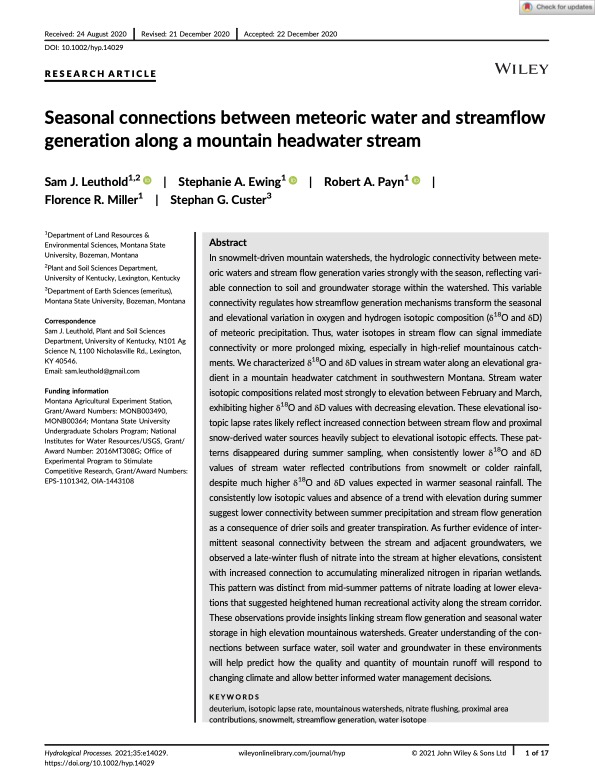
Hydrologic partitioning of precipitation in mountain headwaters
Cited 9 times
Hydrological Processes, 2021
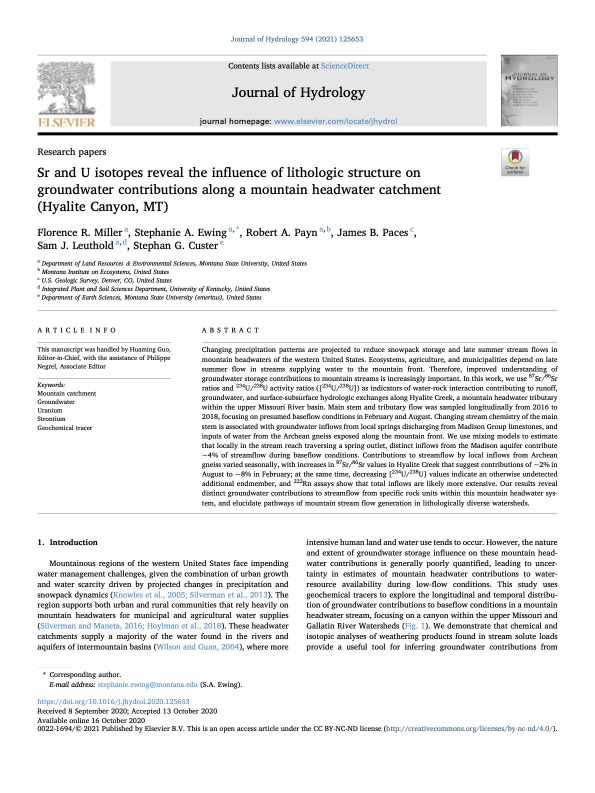
Using Sr and U isotopes to understand mountain baseflow
Cited 0 times
Journal of Hydrology, 2020
Current Projects
Predicting SOM Fractions with ML and AI
We’re building a stacked ensemble modeling platform to predict particulate and mineral-associated organic matter using mid-infrared spectra, soil physicochemical data, and weather variables. By combining diverse machine learning algorithms, this approach aims to improve prediction accuracy across varied soils and climates. The project also supports calibration of process-based models and contributes to emerging soil carbon MRV protocols. Ultimately, it helps bridge spectroscopic calibration with ecosystem modeling.
Spectra as Predictors of Ecosystem Outcomes
This project explores whether mid-infrared spectra can be used to predict agroecosystem outcomes like crop yield and agronomic optimum nitrogen rate, as well as soil health metrics. While spectral modeling has traditionally focused on physicochemical composition, we’re testing whether SOM’s spectral fingerprints encode information about soil function. By integrating field data and performance metrics, the work pushes toward a more functional interpretation of MIR signals.
Farmer Decisions and Carbon Outcomes
This multi-institution collaboration investigates how farmer decision-making interacts with soil carbon outcomes and emerging carbon market policies in the Midwest Corn Belt. We’re linking behavioral models with biogeochemical simulations and economic forecasting tools to ask how shifting incentives might alter land use and soil outcomes. The work integrates survey data, institutional context, and process-based modeling to explore tradeoffs and feedbacks. It also contributes to conversations around policy design and equitable carbon markets.
Tracing Nitrogen from SOM Fractions
Through a set of controlled lab incubations, we’re tracing how different soil organic matter fractions contribute to nitrogen mineralization. By pairing isotopically labeled MAOM with unlabeled POM, we examine how stable and labile pools release nitrogen under varied carbon conditions. This setup allows us to isolate the specific contribution of MAOM to mineralization dynamics across time. The goal is to clarify whether, and under what conditions, MAOM meaningfully supports nitrogen availability in managed soils.
Quantifying Exchangeable MAOM
This project investigates the composition of MAOM that may readily exchange with the soil solution. We’re asking whether this exchangeable fraction is chemically distinct from the bulk MAOM pool, and what that reveals about MAOM’s reactivity and potential to mediate soil processes. Using FTIR spectroscopy, metabolomics, and isotopic analysis, we’re tracing how specific MAOM components may be selectively released or retained. The work contributes to a deeper understanding of MAOM as a dynamic, chemically heterogeneous phase of soil organic matter.
Aggregate Stability and C Cycling
We’re exploring how soil physical structure—particularly stable aggregates—influences the formation and persistence of mineral-associated organic matter. Using comparative analysis of SOM dynamics inside and outside of aggregates, we examine how structural protection shapes carbon and nitrogen cycling. This project brings a spatial lens to biogeochemical modeling, linking aggregate-scale processes to broader soil function. It also challenges assumptions about where stability resides in soil systems.
Refining SOM Fractionation Methods
This ongoing work revisits the foundations of SOM fractionation, asking how we define and measure meaningful carbon pools. We’re particularly interested in how methodological choices like whether to density sepeeate or how to disperse aggreagtes alters recovery rates and the interpretability of fraction-specific data. The project uses physical fractionation in tandem with isotopic analysis to assess how we infer SOM stability. It aims to clarify the tradeoffs that underpin many soil C studies.
